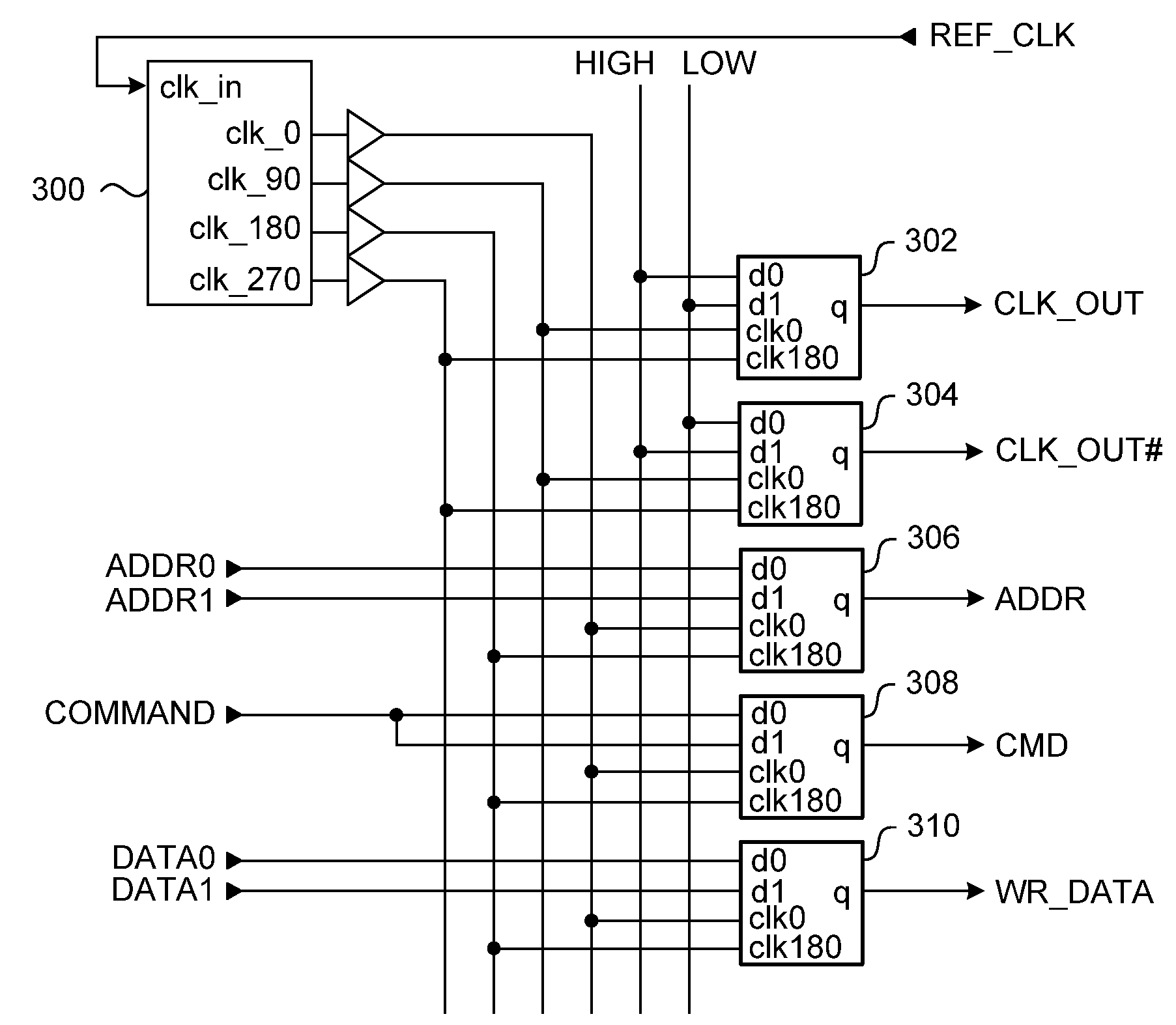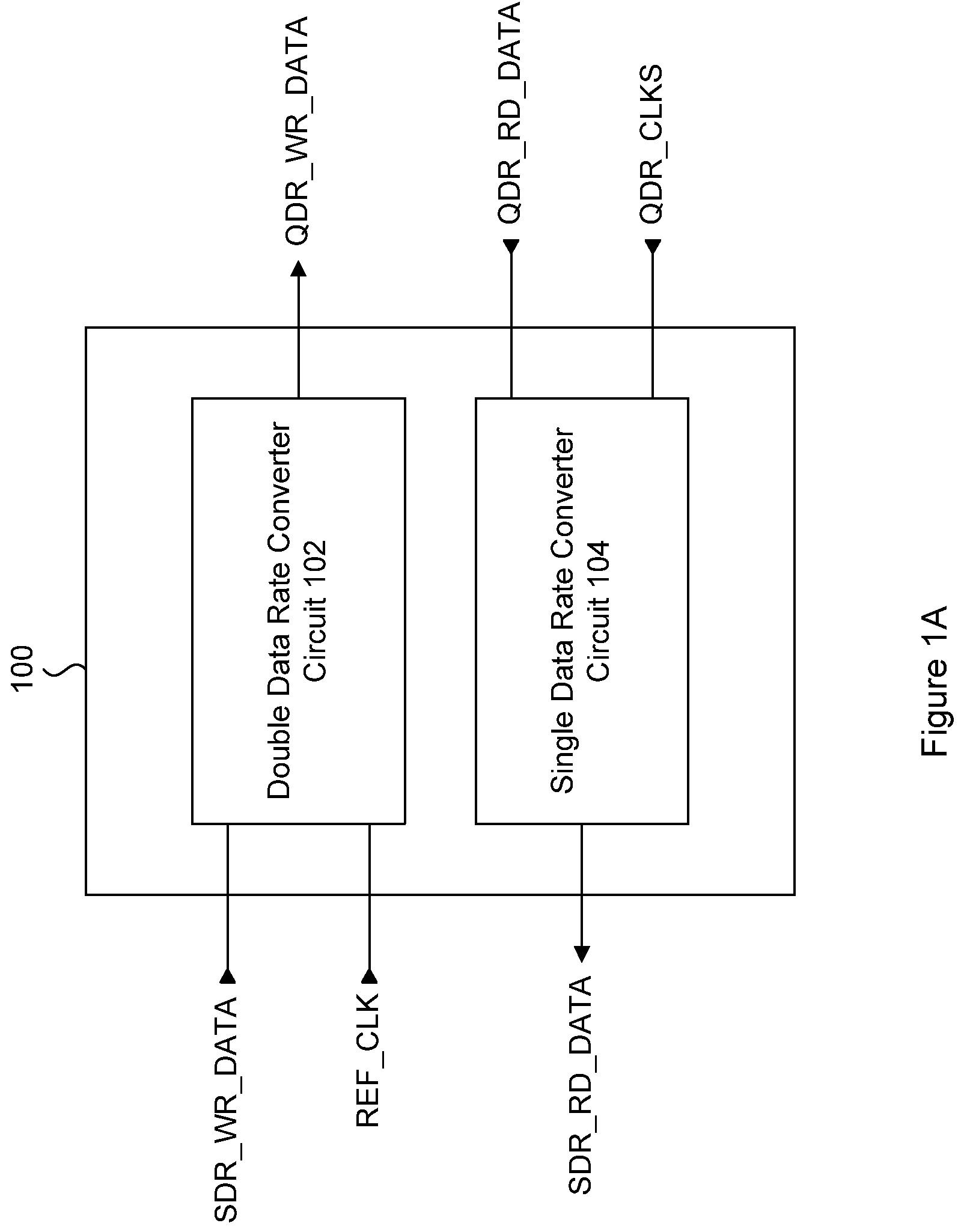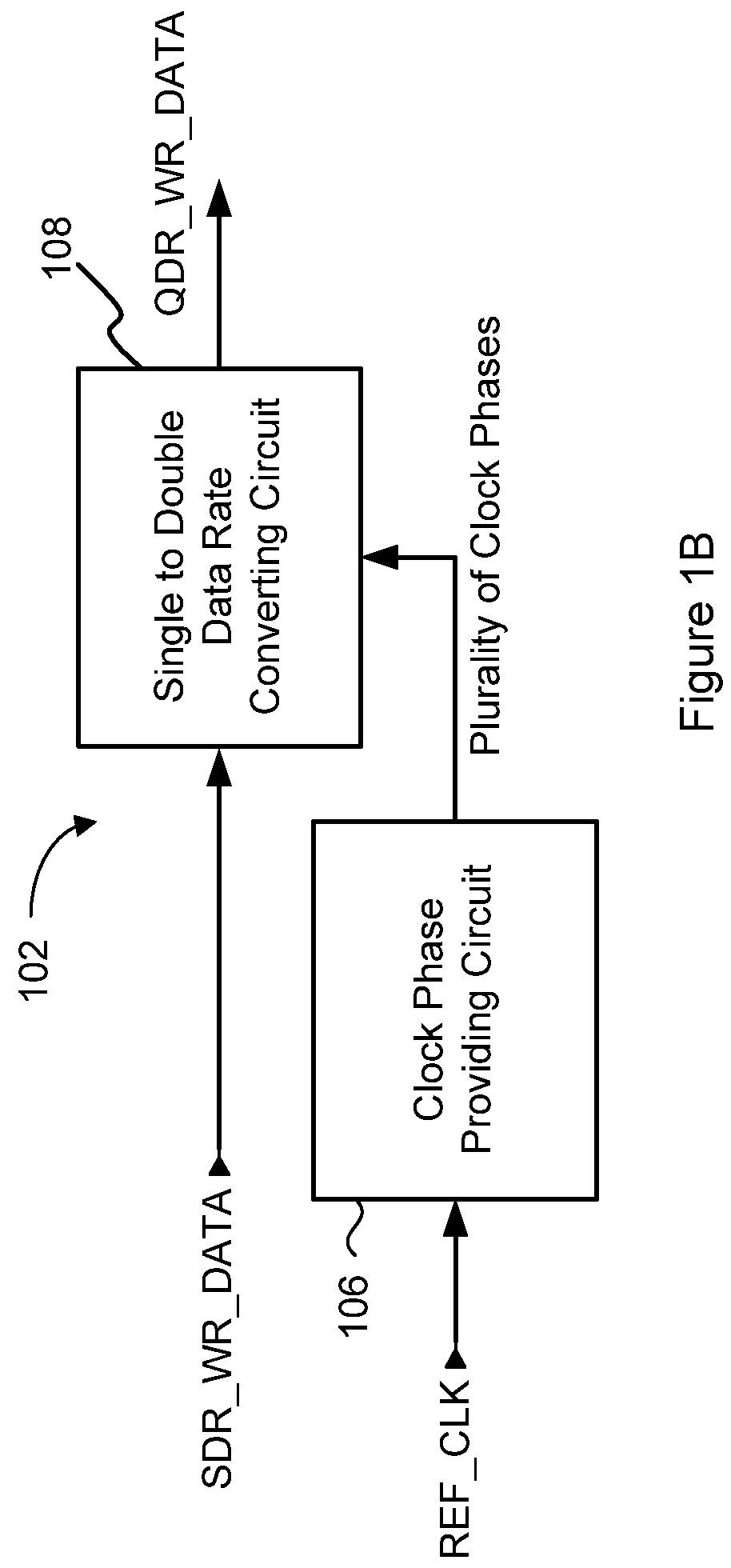Apparatus and method for interfacing to a memory
a technology of memory and apparatus, applied in the field of apparatus and a memory interface, can solve the problems of complex implementation, large challenge of interfacing to external memory at high clock rate, and standard design techniques that are not proven to provide a feasible solution to interfacing with external memory at these data ra
- Summary
- Abstract
- Description
- Claims
- Application Information
AI Technical Summary
Problems solved by technology
Method used
Image
Examples
Embodiment Construction
[0043]A delay locked loop (DLL) is added to the system in order to provide an accurate, PVT insensitive translation of the drive clocks into the write data eye. Adding a master-slave DLL to the system provides an accurate, PVT insensitive translation of the echo clocks into the read data eye. Solidifying the timing critical drive and receive logic which directly interfaces to the I / O buffers reduces the pin-to-pin skews. Utilizing clock phase outputs of the DLL in the solidified drive and receive logic blocks reduces further the skew between the clock and related data signals, and also removes the reliance on a differential clock. The system allows a much more relaxed constraint on clock duty cycle. Design of circuitry within the solidified drive and receive logic blocks permits simple logic modeling for fit within an ASIC flow. Physical design of the solidified drive and receive logic blocks permits simple fit within ASIC place and route flows for increased ease of implementation a...
PUM
 Login to View More
Login to View More Abstract
Description
Claims
Application Information
 Login to View More
Login to View More - R&D
- Intellectual Property
- Life Sciences
- Materials
- Tech Scout
- Unparalleled Data Quality
- Higher Quality Content
- 60% Fewer Hallucinations
Browse by: Latest US Patents, China's latest patents, Technical Efficacy Thesaurus, Application Domain, Technology Topic, Popular Technical Reports.
© 2025 PatSnap. All rights reserved.Legal|Privacy policy|Modern Slavery Act Transparency Statement|Sitemap|About US| Contact US: help@patsnap.com



